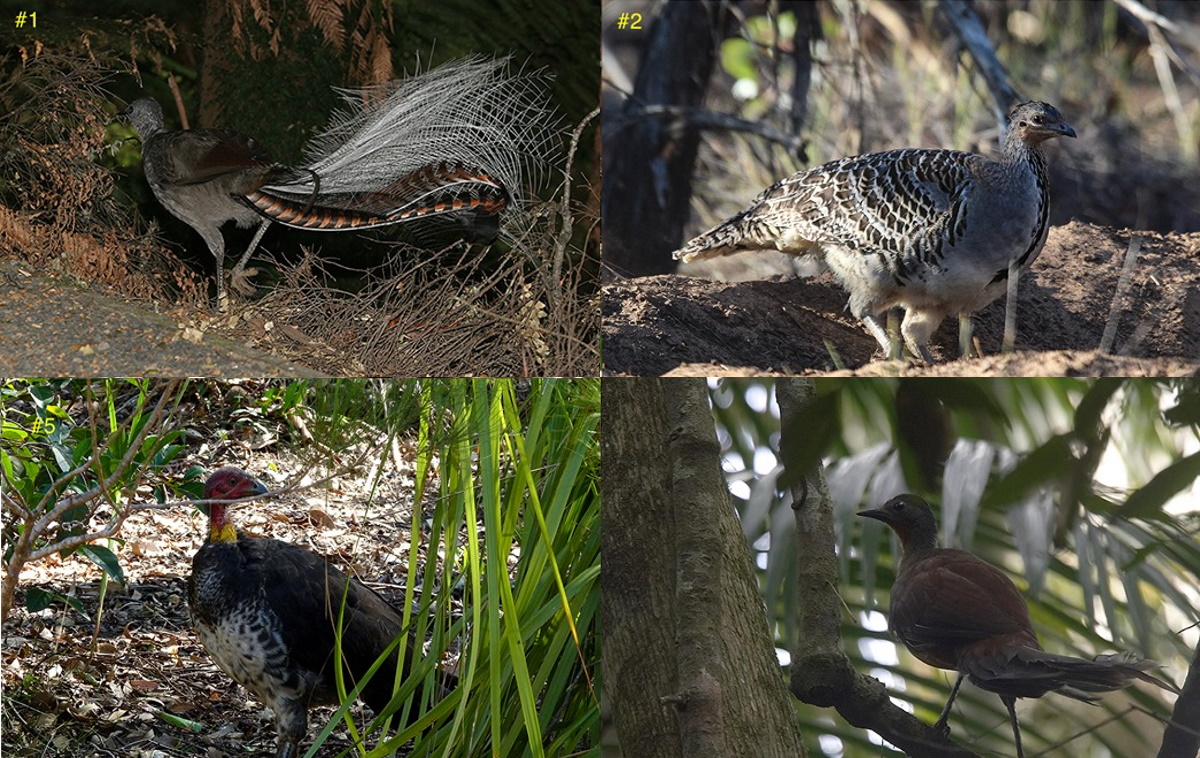Super Saturday ID CHALLENGE 1 August 2020: All Levels by Pamela Keil
Today’s Super Saturday challenge is a little bit different. I’m not going to provide location/behaviour information today, as you should be able to ID all the species (some easily) without that information… The photos also reflect, in some cases, how difficult it is to actually see and photograph these birds.Instead, I’m asking you: What do these 10 species have in common?

Solution:
Species ID’s below, but the real challenge was figuring out what connected these species. So I’ll be focusing more on behaviour than ID points.
You all very sagely pointed out that these birds are all ground nesters — though their actual nests vary quite a bit! Some lay their eggs directly on the ground, some dig burrows, others build stick nests either on the ground or close to it, and others are mound nesters. There are many species that nest on the ground (many of the seabirds and waders for example), but the species in this challenge have one other thing in common — which sets them even further apart. The answer is… COMPOST!
The species in this challenge are all considered “ecosystem engineers” for their role in turning over the leaf litter and the soil, which helps in decomposition (composting) of the organic matter, and in aerating the soil. This role is extremely important to keep the nutrient cycle going, and also to reduce fire danger by removing leaf litter accumulation.
Many mammals once filled this role in Australia as well.
Unfortunately, for both the mammals and the birds, living and breeding on the ground has put them in danger to introduced predators and many have greatly reduced ranges and are highly endangered, if not extinct. The ecosystem role that these species play is being lost in many areas, and there are dire consequences for the environment due to their loss.
Here’s an interesting article about the ecosystem role that these species play: http://www.aridecologylab.com.au/pubs/Eldridge_and_James_EMR_2009.pdf
..
ID BIRD #1

With the beautiful tail plumes which look like “lyres,” this bird is quickly identified as an adult male Superb Lyrebird.
Lyrebirds build dome nests of sticks either on or near the ground. They also spend much time scratching through the leaf litter in search of invertebrates and other small prey. They rake the leaf litter, spreading fungal spores which break it down, and greatly assisting the composting process. This greatly reduces fire danger by decreasing the ground fuel load.
However, where they have been introduced in Tasmania, their scratching is causing ecological disturbance to soils that are more fragile and not adapted to the lyrebird’s behaviour.
..
ID BIRD #2

This beautiful bird is a Malleefowl, and one of the mound nesters.
Mound nesters not only help decomposition by disturbing the leaf litter, they actually build a giant compost heap to nest in. The compost warms with decomposition and is used to incubate the eggs. Again, this is invaluable for reducing fuel loads. They also tend to live in more arid, mallee scrub, rather than the wet forest of many of the other species in this challenge.
Unfortunately, Malleefowl are extinct across much of their range, and endangered in the areas where they are still found. Their important ecological role is not being maintained.
..
ID BIRD #3

This is an Orange-footed Scrubfowl. Another of the mound-builders, but one which lives in the tropical northern areas. In Darwin, they happily live alongside people, and are relatively easy to spot.
..
ID BIRD #4

This is an Albert’s Lyrebird. Though it lacks the “lyre” on its tail, its ecology is similar to the more well known Superb Lyrebird.
..
ID BIRD #5

This is an Australian Brush-turkey, and the last of the mound-building species on our list. It is found in the wetter forests along the Eastern coast of Australia. Again, this bird as adapted well to living in suburban areas, wherever there is suitable habitat.
..
ID BIRD #6

This is a Southern Cassowary.
The huge feet can deliver a powerful kick, but are also used to dig through the leaf litter in search of fruit and invertebrates. In addition to its role in soil turnover, the Cassowary is also an important disperser of many rainforest fruit seeds. They play a significant role in the health of the rainforest — but don’t get to close!
Cassowary build their nest directly on the ground, and it is really just a scraped area where they lay their bright green eggs.
..
ID BIRD #7

This is an Australian Logrunner.
Like the lyrebirds, logrunners build conical stick nests on or near the ground. In their search for invertebrates, they scratch and clear patches of the forest floor, contributing to leaf litter turnover.
..
ID BIRD #8

This is a Chowchilla, which is another species of logrunner.
The Chowchilla is restricted to a much smaller range, and is difficult to find and photograph. Keep an ear out for their scratching, and you may be lucky enough to spot one.
..
ID BIRD #9

This is a Sooty Shearwater, and in this challenge, it is representing many species of Shearwaters.
Shearwaters dig burrows to nest in, and in doing so can turn over large amounts of soil each year. They also bring in food from the sea which they feed to their young — essentially providing fertilizer for the soil and a novel source of nutrients. In the study linked in the original comment, they found that Wedge-tailed Shearwaters can overturn twice as much soil per year as a Burrowing Bettong — and those turn over a LOT of soil!
..
ID BIRD #10

This is a Little Penguin (chick). Little Penguins, like the shearwaters, nest in burrows and bring food from the sea. Though their colonies are not as large and they tend to reuse old burrows, they can also overturn quite a lot of soil each year.
